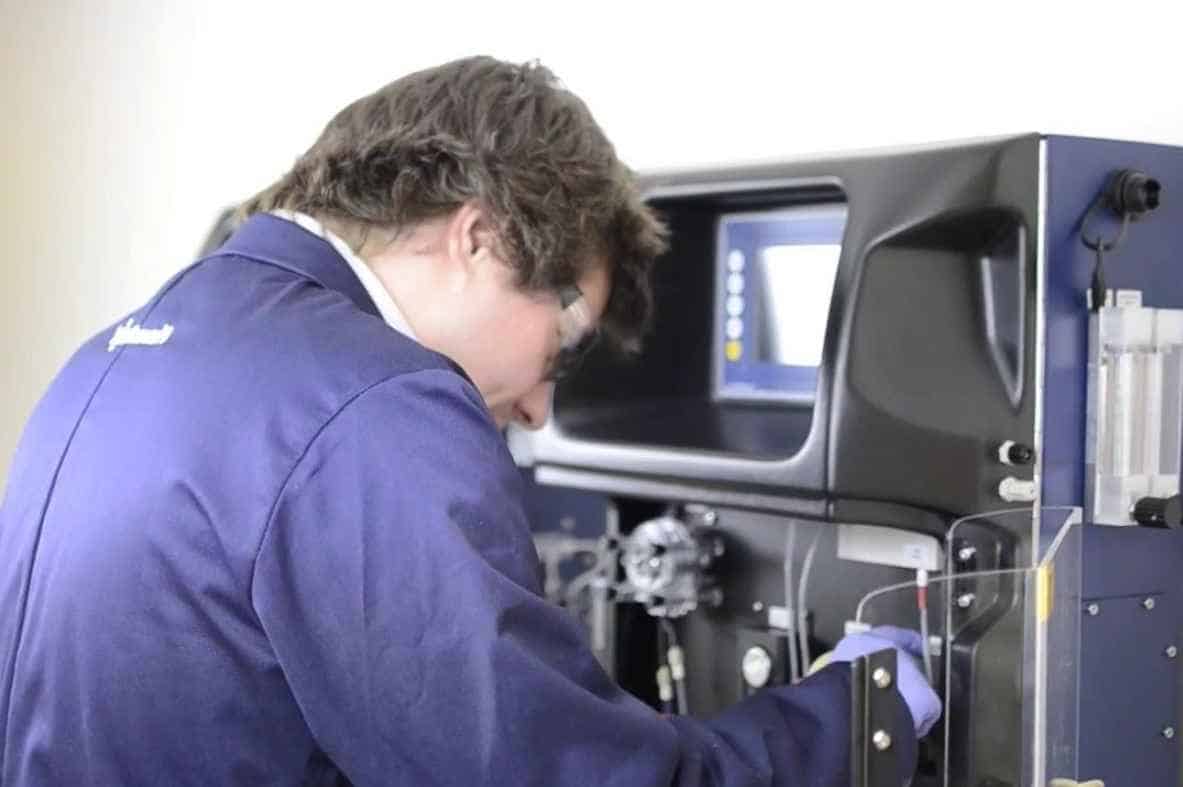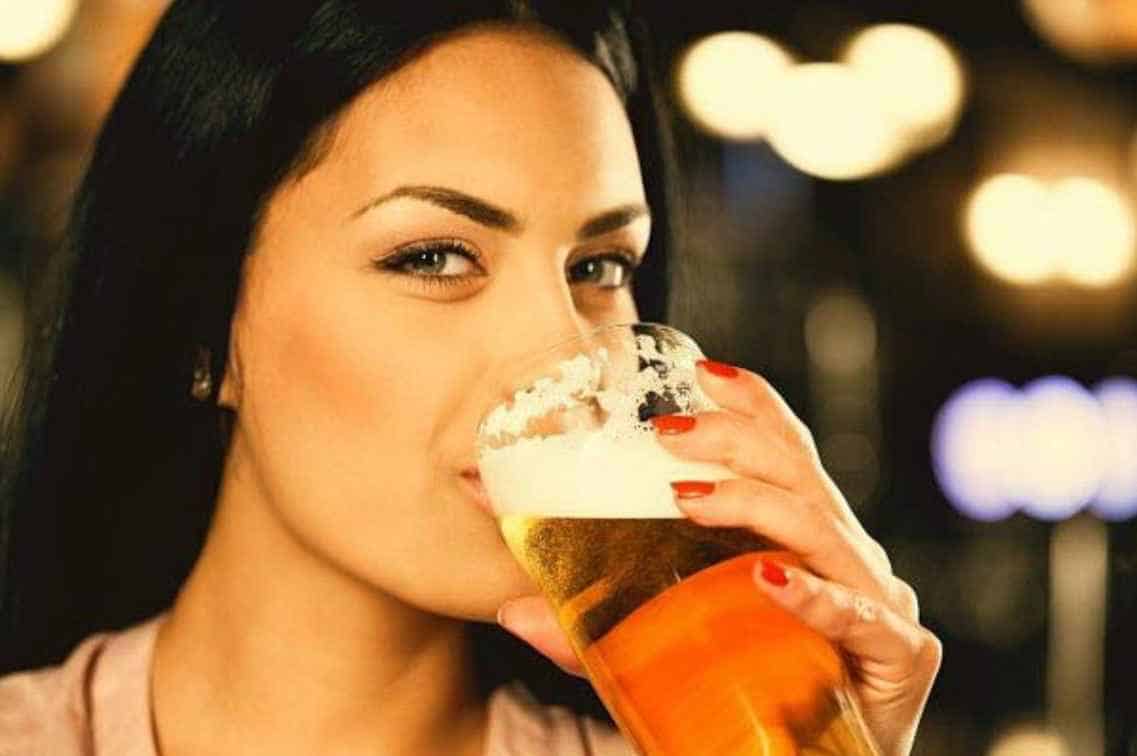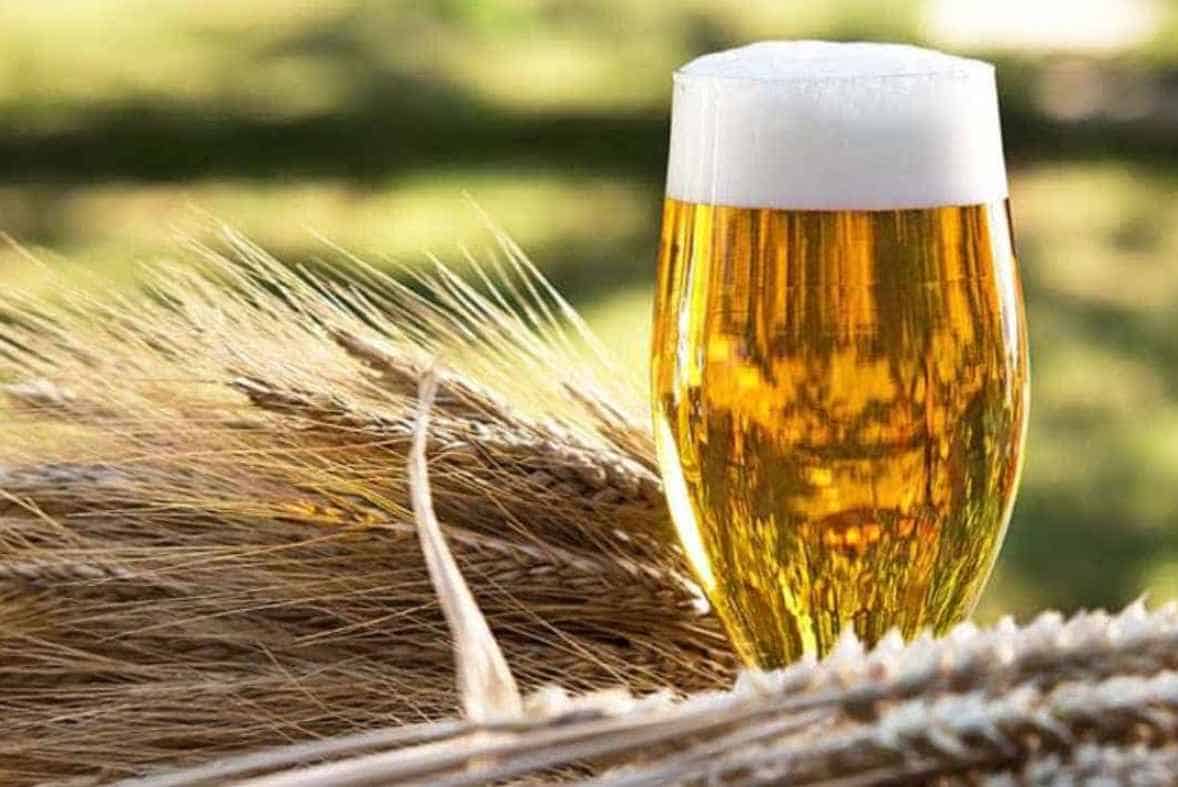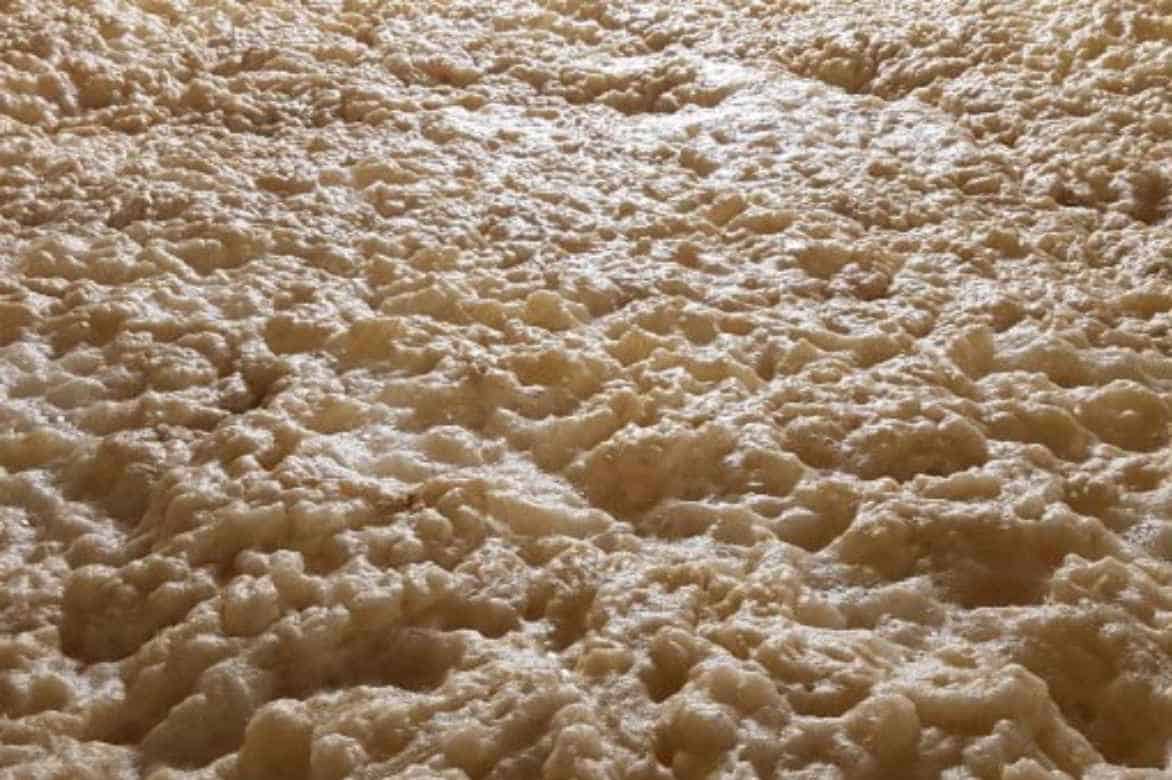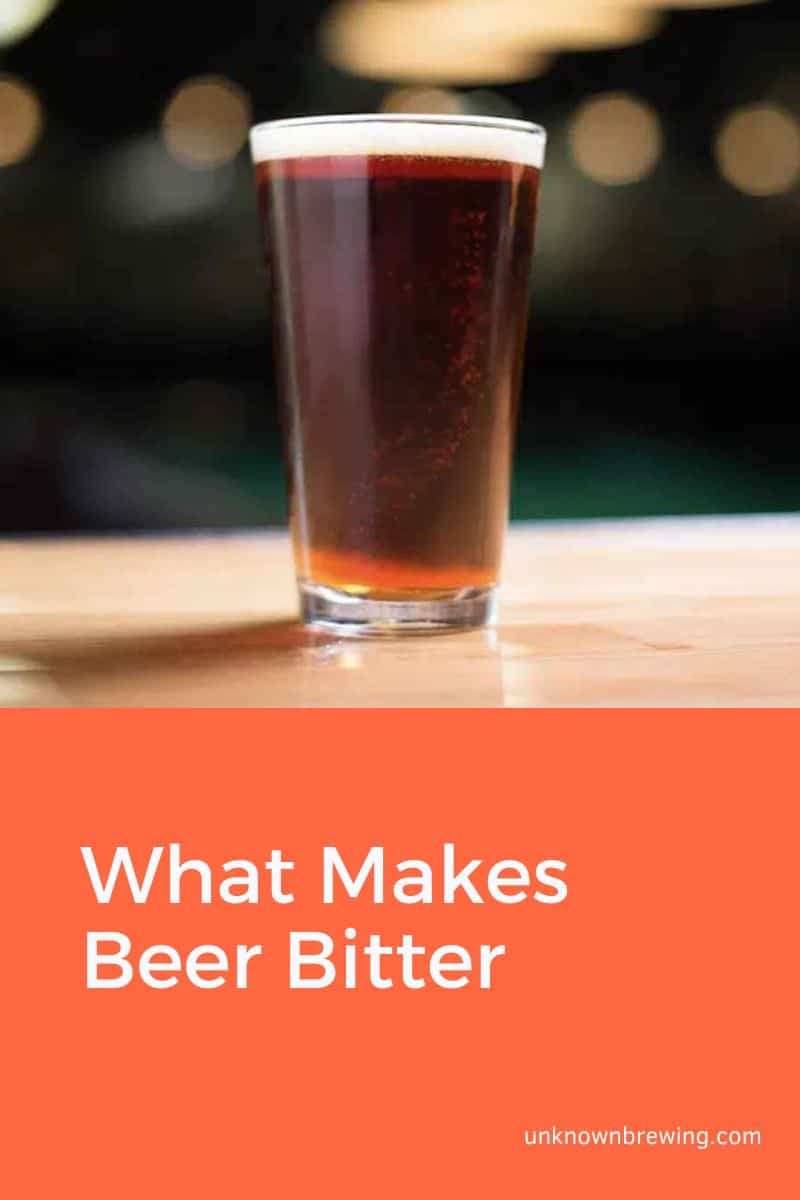Bitterness is an essential component of a beer’s flavor. It is a sharp and sometimes unpleasant sensation we feel on our tongues. Not everyone appreciates beer’s bitterness on their first try; it’s an acquired taste. But what makes beer bitter?
The alpha acids that reside in hops are the primary contributor to bitterness in beer. A product of the Humulus lupulus plant, hops are cone-shaped flowers that brewers use to impart flavor, aroma, and bitterness to beer. Bitterness can also come from other ingredients, like malt, water, or other adjuncts.
This article tackles the various sources of bitterness in beer. But first, what is bitterness, and how important is it in brewing?
What is Bitterness in Brewing
Bitterness is the harshest taste sensation that the human tongue can identify. It is the sharp and often unpleasant sensation you get when tasting a spicy brew.
While it doesn’t seem like it, beer brewing involves finding the right balance of sweetness and bitterness. Without bitterness, your beer would be sweet, super drinkable, and less fun to consume.
Measuring Beer Bitterness
Bitterness in beer is measured by the International Bitterness Unit (IBU) system. This scale measures the concentration of hop resin (bittering agent) in a specific batch. The IBU scale runs from 0 to infinity.
Beer style can hint at the level of bitterness to expect from a certain brew. Below is a table comparing the IBU ranges for popular beer styles:
| Beer Style | IBU Range |
| Double IPA | 65-100 |
| Imperial Stout | 50-80 |
| West Coast IPA | 50-70 |
| Hazy Double IPA | 45-80 |
| Hazy IPA | 30-50 |
| Pale Ale | 30-50 |
| Dry Stout | 30-35 |
| Pilsner | 25-45 |
| Saison | 20-38 |
| Blonde Ale | 14-25 |
| Light Lager | 4-10 |
The table above shows that light lagers are the least bitter beer in the industry, while double IPAs are the strongest.
Actual Bitterness vs. Perceived Bitterness
Not all fermentable sugars are converted to alcohol in the fermentation process. Sometimes, residual sugars mask beer bitterness.
For example, you have two beers, an Ameican Stout and an IPA, with similar IBU counts and identical alcohol levels. But the final gravity of the stout is 5° Plato while the IPA is 3° on the same scale.
Upon tasting the two beers, the stout will taste sweeter than the IPA despite both beers having an exact IBU count.
Actual bitterness involves judging the taste of beer by the number of bittering agents in a sample, while perceived bitterness involves using your tongue to determine the brew’s taste.
What Makes Beer Bitter?
Bitterness in beer is derived primarily from the chemical composition of hops. It can also come from other ingredients like water, spices, and malt. Beer bitterness can also come from certain processes of brewing. Below are the factors that contribute to the bitterness of beer:
The Role of Hops in Beer Bitterness
After the mashing process, a brewer boils the resulting wort with hops for a specific period. Hops play a significant role in developing a beer’s taste due to one key chemical, alpha acids.
Below are some of the processes that affect bitterness in beer:
Isomerization of Alpha Acids
Alpha acids or α acids of compounds found in the resin glands of hops. They are the chemical compound primarily responsible for the bitterness in beer. The most common α acids include adhumulone, humulone, cohumulone, prehumulone, and posthumulone.
Alpha acids are insoluble; when boiled, they isomerize to form soluble iso-alpha acids. Iso-α acids have the same number of atoms as alpha acids but exhibit a different chemical structure.
Apart from imparting bitterness to beer, hops also develop the aroma of the final brew. There are three distinct hop classes, including Continental (Noble), English, and American hops.
The table below compares the different hops, their alpha acid content, and the aroma they impart in beer:
| Hop Class | Hop Variety (Alpha Acid Content) | Aroma |
| Continental (Noble) Hops | Saaz (2-5%) | Herbal, earthy, and spicy aromas |
| German Spalt (2.5-5.7%) | Floral, herbal, earthy, and spicy aromas | |
| Tettnanger (2.5-5.5%) | Grassy, zesty, and floral aromas | |
| English Hops | Fuggle (2.4-6.1%) | Earthy, floral, and minty aromas |
| Challenger (6.5-8.5%) | Cedar and green tea aromas | |
| Golding (4-7%) | Sweet honey-like flavor | |
| American Hops | Chinook (12-14%) | Pine with a touch of citrus |
| Cascade (4.5-8%) | Floral and grapefruit aromas | |
| Citra (10-12%) | Citrus flavor with passion fruit, mango, and peach aromas | |
| Simcoe (12-14%) | Grapefruit, pine, and onion aromas |
Oxidation of Iso-Alpha Acids During Beer Aging
Iso-alpha acids are sensitive to oxygen, and they deteriorate as beer ages. The rate of α acid removal depends on temperature, time, and magnitude of oxygen exposure. For example, after eight months, a beer loses around 20% of its iso-α acids at room temperature.
As the iso-alpha acids disappear, beer bitterness decreases.
Retention of Hop Oil
When you add hops to the boiling kettle, hop oil distills with the evaporating steam. While enough hop oil may remain to impact the beer aroma, the remaining quantity is insufficient to alter bitterness.
But when you add hops during or after fermentation, hop oil dissolves directly into the beer. Hop oil imparts a strong flavor to beer. This process is called dry hopping.
Role of Malt in Beer Bitterness
Malt contributes to the bitterness of beer in two ways:
- Roasting or Kilning
- Providing polyphenols
Malt Roasting
Kilning is the final step of malting, and the roast intensity can affect the final beer’s flavor and aroma. Heavily kilned malts make bitter brews. Many stouts derive their bitterness not from alpha acids but from the character of their malts.
Polyphenols in Malt
Tannins naturally occur in husks, the bark of trees, and other plant material. A fancier name for tannins is polyphenols. Both malt and hops are sources of tannins.
Polyphenols add a quality of dryness to beer. In brewing, we call this quality astringency.
Astringency is often confused with actual bitterness. In this way, malt contributes to the perceived bitterness of a beer.
The Role of Yeast in Beer Bitterness
Yeast converts fermentable sugars to carbon dioxide, alcohol, and energy. The resulting carbon dioxide dissolves in water to form carbonic acid, which is sour in taste.
And as the beer pours into your mouth, it releases CO2. The fizzing of beer in the mouth gives it the characteristic bite that you expect from beer. In this fashion, carbonation increases the perceived bitterness of a beer.
The Role of Serving Temperature in Beer Bitterness
Serving beer at low temperatures decreases the perceived bitterness of many beverages, and beer is no exception. For maximum enjoyment, we serve different beer styles at various temperatures.
Below is a table comparing the ideal serving temperatures for different beer styles:
| Beer Style | Ideal Serving Temperature |
| Sours | 45-50°F |
| Wheat Beers | 40-45°F |
| Stouts and Porters | 45-55°F |
| Black Ales | 45-55°F |
| IPAs | 45-55°F |
| Blonde and Cream Ales | 40-45°F |
| Pale Lagers and Pilsners | 35-40°F |
| Light Lagers | 33-40°F |
| Amber Lagers and Marzens | 45-50°F |
Final Thoughts
Bitterness in beer is an acquired taste. As for beer, bitterness comes primarily from hops. These cone-shaped flowers contain chemical compounds called alpha acids. These compounds isomerize to bittering agents called iso-alpha acids.
Different hop varieties have different alpha acid levels. High-alpha acid hops like the American-bred Chinook produce very bitter American stouts.
Apart from hops, other ingredients like yeast and malt can contribute (to a smaller extent) to beer bitterness. Yeast is the primary driver of carbonation and alcohol secretion. Both factors increase a beer’s perceived bitterness. The polyphenols in grain husks add astringency to beer, increasing beer’s perceived bitterness.
These are the main factors that make beer bitter. What is the most bitter beer brand you’ve ever had? Share your opinion in the comment section below.

As a homebrewer, Michael would get frustrated about the lack of brewing information on the internet. After hundreds of gallons of spoilt batches, Micheal had enough. And he founded Unknown Brewing as a resource for homebrewers.

